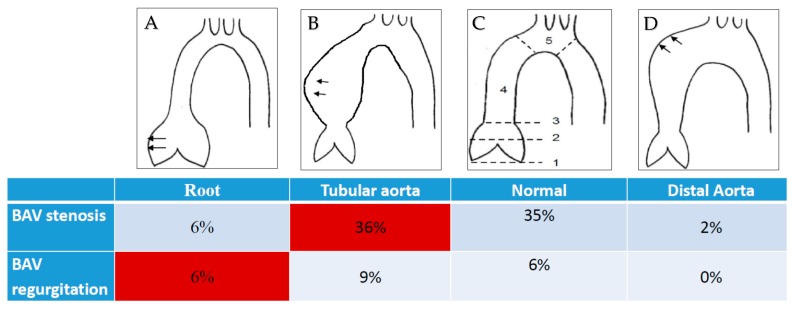Figure 5.
Forms of bicuspid aortopathy: (A) root phenotype; (B) dilation of ascending aorta; (C) normal aorta; (D) dilation of distal ascending aorta (proximal aortic arch). (1) aortic annulus; (2) sinus if Valsalva; (3) sinotubular junction; (4) tubular ascending aorta; (5) aortic arch. Only 42% of bicuspid patients are classified according to the two phenotypes (marker in red). The remaining 58% are not considered.

